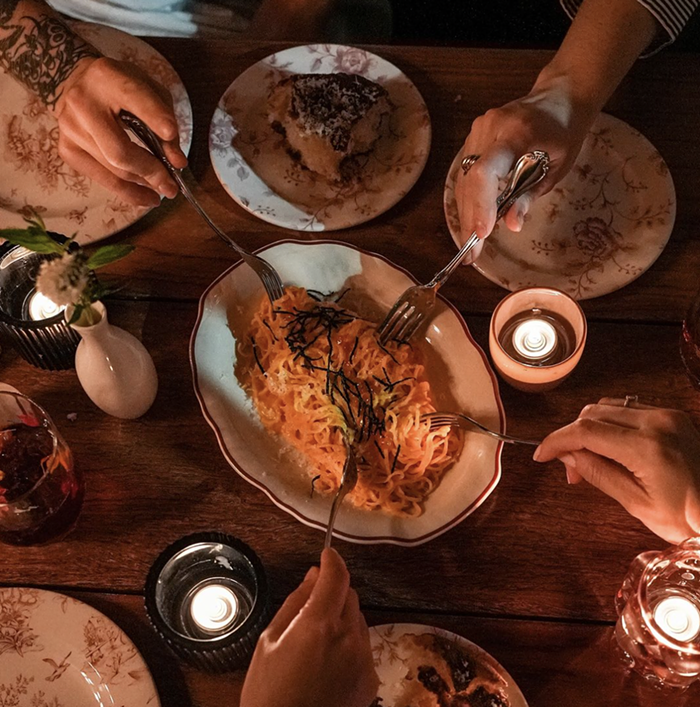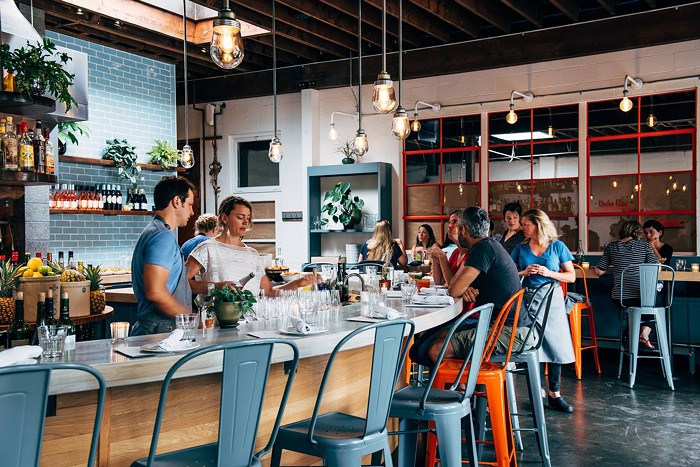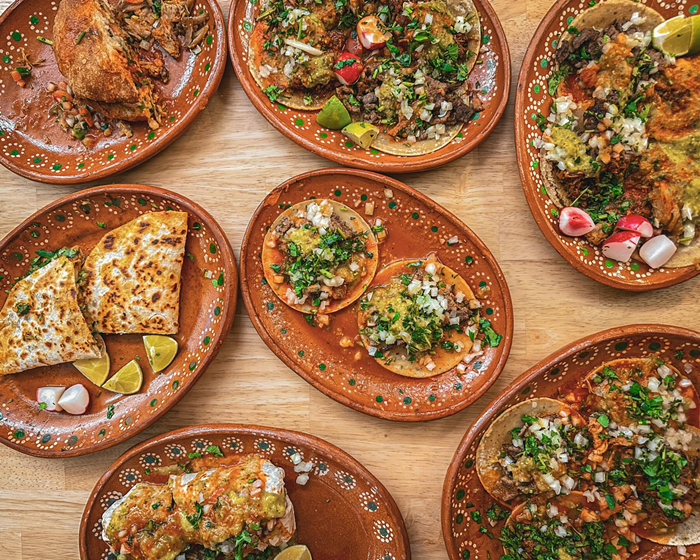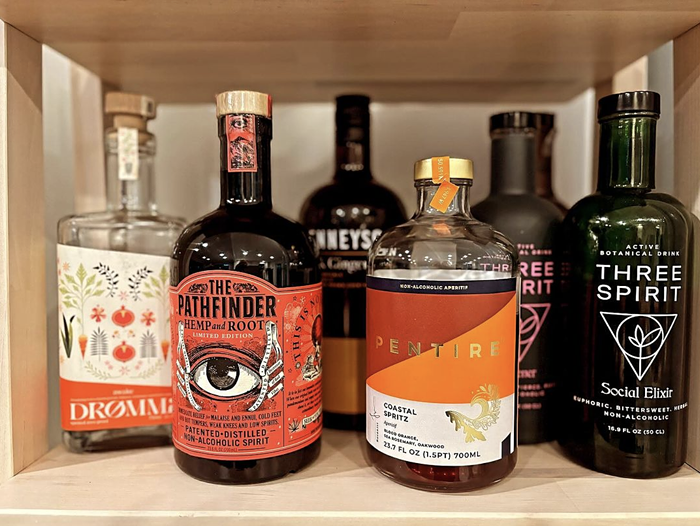It's a widely accepted practice for restaurants to describe their food as "elevated"—which drives me crazy. Whether applied to burgers, tacos, or bulgogi, it usually just means that a place is charging higher prices for something diners are accustomed to paying less for. It also implies that the original or traditional version of that food is somehow less valuable.
Girin, which has been open in Pioneer Square for a little more than six months, bills itself as offering an "elevated yet authentic Korean culinary experience." Does Korean food need to be elevated? No. With its potent mix of fiery, sour, garlicky, and fishy flavors, it's already wildly delicious—and has been for thousands of years. But that's not to say that what owner Steven Han and chef Brandon Kirksey are doing at Girin isn't significant.
At its essence, Girin is a high-end steak house—a really good one, too. While you can get great kalbi (barbecued short ribs) at Korean restaurants throughout Seattle, as well as in Federal Way and Lynnwood, what you can't find at these places is precisely what Girin does best: high-quality, carefully sourced meat, much of it butchered in-house, that's prepared and presented with reverence. And just like any other fancy, pricey steak house, you're paying the big bucks for a few other things: a swanky setting, knowledgeable and graceful service, and the opportunity—should you have the means and desire—to spend $240 for a bottle of Cabernet.
If you go to Girin, I recommend you go all out: Order the bone-in rib eye ($72), which comes from Double R Ranch in Eastern Washington. I ordered it cooked medium rare, to which my server replied, casually but assuredly, "How about just a little more on the rare side?" This made me instantly trust him.
The rib eye is 18 ounces of beautiful marbled beef that's dry aged in house for 40 days, which concentrates its flavor into something dark and primordial. The steak is exceptionally moist, and with every bite, its luscious fat leaves a slick, delicious coating on your lips. It comes with four perfectly fried Pacific oysters and is topped with a tart salad of thinly shaved onion and scallion. It's remarkable, right down to all the sinewy, fatty, gristly bits you can chew off the bone.
Because this is a Korean steak house, the steaks—as well as the other proteins such as pork belly, whole snapper, and pork sausage—are served not with sides like mashed potatoes or creamed spinach, but as ssam: with butter and red leaf lettuce, as well as chrysanthemum and perilla leaves, in which to wrap the meat with the accompanying pickled daikon, fresh red and green chilies, raw garlic, and ssamjang, a paste made from fermented chilies and soybeans.
It's a rare treat to be served such a lovely, massive piece of meat and be able to slather it with complex, flavorful ssamjang, which is salty, funky, and a little spicy, sweet, and nutty. So slather with abandon—your server will gladly bring you more.
Servers will also bring you more banchan—the little side dishes that accompany every Korean meal. There's house-made Napa kimchi—good and sour, with plenty of spice—as well as the strangely ubiquitous but wonderfully creamy potato salad made of sweet potato, cucumber, and mayonnaise. But my favorite items were the myeolchi—tiny, crunchy anchovies, silver and glinting, whose saltiness was balanced by a drizzle of honey and slivered almonds.
Part of the fun of eating Korean food is the communal aspect—dipping into the same dishes of banchan as your dining partners, tearing pieces of lettuce for each other and handing them across the table. In a similar spirit, you should order a kettle of makgeolli, an unfiltered Korean rice wine whose slight sweetness and effervescence nicely counters all the food's savoriness and spice. Take turns filling each other's shallow golden bowls with the milky liquid. (Girin brews its own makgeolli but does not yet have the permit to sell it. They hope that changes that soon.)
What distinguishes Girin is the scope of its ambition. While most Korean restaurants aren't making their own tteok, or rice cakes, Girin is. And they are wonderfully chewy. I loved the octopus tteokbokki—pieces of octopus that are braised and then grilled so they are as tender and chewy as the rice cakes, tossed with carrot and sweet potato in a spicy (if a bit too sweet) sauce made with gochujang, and fired over high heat to get plenty of crispy, flavorful bits and edges.
All the elements were thoughtfully cut to the same size and then arranged on the plate like a festive holiday wreath. In Korea, tteokbokki—a dish made of rice cakes, fish cake or some kind of meat, and green onion in a spicy-sweet sauce—is a popular street food. At Girin, which charges $18 for a plate of it, it was artful and felt worth the price. (Girin also serves a mushroom tteokbokki made with local king oyster, chanterelle, and matsutake mushrooms.)
I talked with Kirksey earlier this spring, just as Girin was about to open. We discussed the challenge of charging higher prices for a cuisine diners are used to paying much less money for.
"If you're okay with eating Costco beef, then you can go pay six dollars for it," Kirksey told me. "But if you want [meat] that someone's dedicated their life to raising properly, that's been taken real care of in the butchery process, and prepared by someone who cares how a particular piece of meat turns out, that's not six dollars."
Rather than calling it "elevated," it seems what Han and Kirksey are after is a Northwest take on Korean: local, seasonal, artisanal.
"It costs more money to eat better quality food," Kirksey said. "My whole cooking background respects this. I try hard to support everything local, because it just makes so much more sense. When I go shopping for my home, I pay more, because it's important to me."
If you don't have a lot of money to drop at Girin, go during the daily happy hour in the bar, when kalbi beef ssam is $10 instead of $36, and pork belly and a charred scallion-and-ginger pork sausage is $8 instead of $24 and $28, respectively. I'd come back in a heartbeat for a full plate of the pork belly—fatty, thin triangles of meat kissed with char and smoke from the grill—but I'll probably skip the sausage, which was a bit too gingery. (I would, however, come back every day for the fantastic buchu kimchi that accompanied it.)
A strong happy hour and bar program smartly plays into Girin's location, which is directly across the street from CenturyLink Field. Being there necessitates that Girin cater to an eclectic crowd, one that might include a bunch of hungry, rowdy people in Sounders or Seahawks jerseys. When the Seahawks play, a bartender recently told me, "Shit gets crazy down here."
I would steer clear of Girin on game day, but I'd happily return during the week, whether it's for an after-work snack in the bar or a throw-down dinner in the expansive dining room, which, while beautiful, can seem cavernous and lonely if it's not full. Both times I visited the restaurant—on a Friday night at 8 p.m. and for happy hour on a Tuesday evening—it was nearly empty. It seemed like a shame, because more people should be enjoying—and sharing—this food.



















